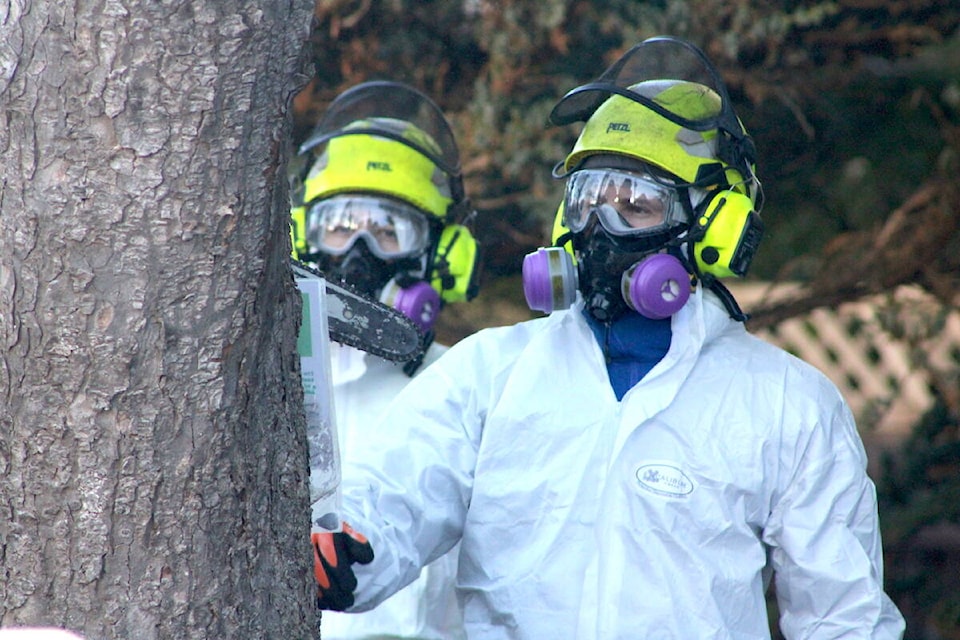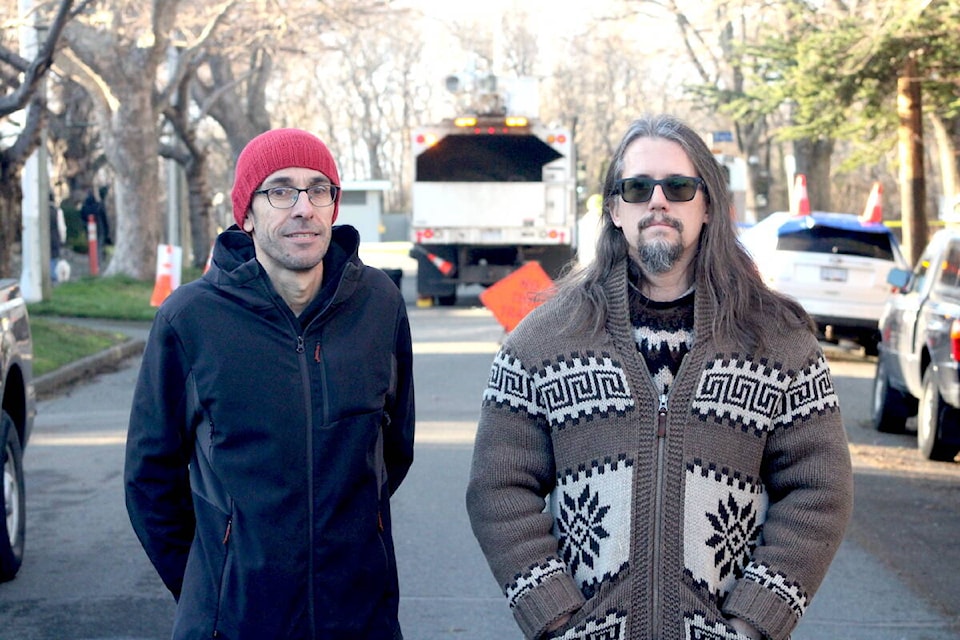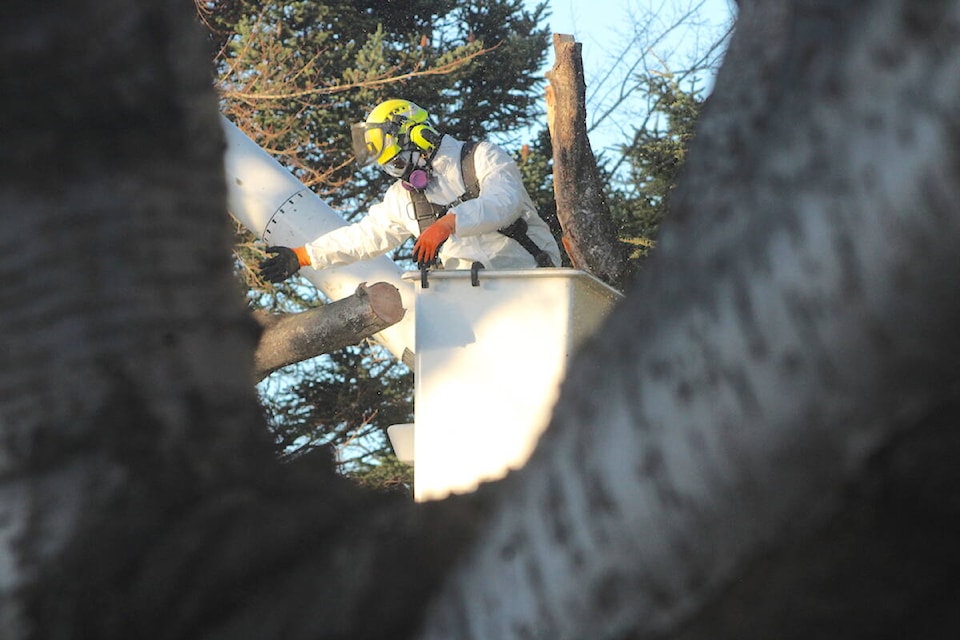A maple that has been growing near Dallas Road for decades has been cut down after it was dying from a fungal disease, one that scientists say will impact more trees as heat waves and droughts worsen with climate change.
The tree was infected with Sooty Bark Disease, a fungus that impacts maple species and was discovered in Victoria in 2022 after it was first detected in B.C. a year after the 2021 heat dome.
Members of the Pacific Forestry Centre looked on as the 40- to 50-year-old tree was dismembered and felled by crews on Thursday (Jan. 11).
Sooty Bark Disease infects the trees with a fungus that grows within the wood and can be identified by what looks like masses of dark soot on the bark.
“What’s really interesting about this fungus is it produces the most spores I’ve ever seen,” said Joey Tanney, a Pacific Forestry Centre research scientist.
There can be up to 70 million spores on one square centimetre of an infected tree’s bark and a five-metre tall maple could host up to 50 trillion spores, Tanney said. Those spores can get worn and will then be blown by the wind, which can allow them to infect new trees if the fungus lands on parts of the tree wounded by pruning, or even by a squirrel.

The fungus may be in a tree and not cause any symptoms for years, but that changes when the temperature ramps up. Researchers have long associated Sooty Bark with heat waves and the Pacific Forestry Centre identified it in B.C. after the 2021 heat dome stressed a host tree, allowing the fungus to invade the maple’s living tissue.
Tanney said they anticipated to find more cases after the recent hot and dry summers, a hypothesis that proved correct.
“This disease is actually associated with climate change,” Tanney said. “As we see these more intense and prolonged droughts and heat waves in the Pacific Northwest, we expect to see this disease to increase in severity.”
Most susceptible to Sooty Bark Disease is the Sycamore maple, a species native to Europe that was brought over for its aesthetics. There are about 250 Sycamore maples in Victoria, but researchers’ concern lies elsewhere as those trees can be replanted with non-susceptible species if they’re infected.
“The next big question is what impact is this going to have on our native maple,” Tanney said.
The Pacific Forestry Centre is currently running a greenhouse experiment to see if native trees, like Big Leaf maples, can be impacted by Sooty Bark Disease. Tanney said they should have an answer by this time next year.

Nicolas Feau, another research scientist from the centre, said they’ve found 30 trees showing signs of the disease in Victoria this year.
The centre hopes to identify the fungus’ prevalence in both the urban forest and natural areas as it suspects the disease to be more widespread in the province now and it may be visible due to hot and dry summers. It’s set up an iNaturalist page and hopes citizens will post pictures of trees they suspect are infected.
Signs of Sooty Bark Disease can include dead branches, leaf wilting, soot-like substance on the bark, defoliation on the crown and a sticky ooze coming from wounded sections.
The dying Dallas Road tree being infected means it has to be put in a container and buried at the landfill. Tanney said Sooty Bark spores are not a concern for people walking by or near infected trees, but they can be an occupational hazard for woodworkers or arborists working on affected maples.
READ: CRD launching public consultation on long-term biosolids plan



